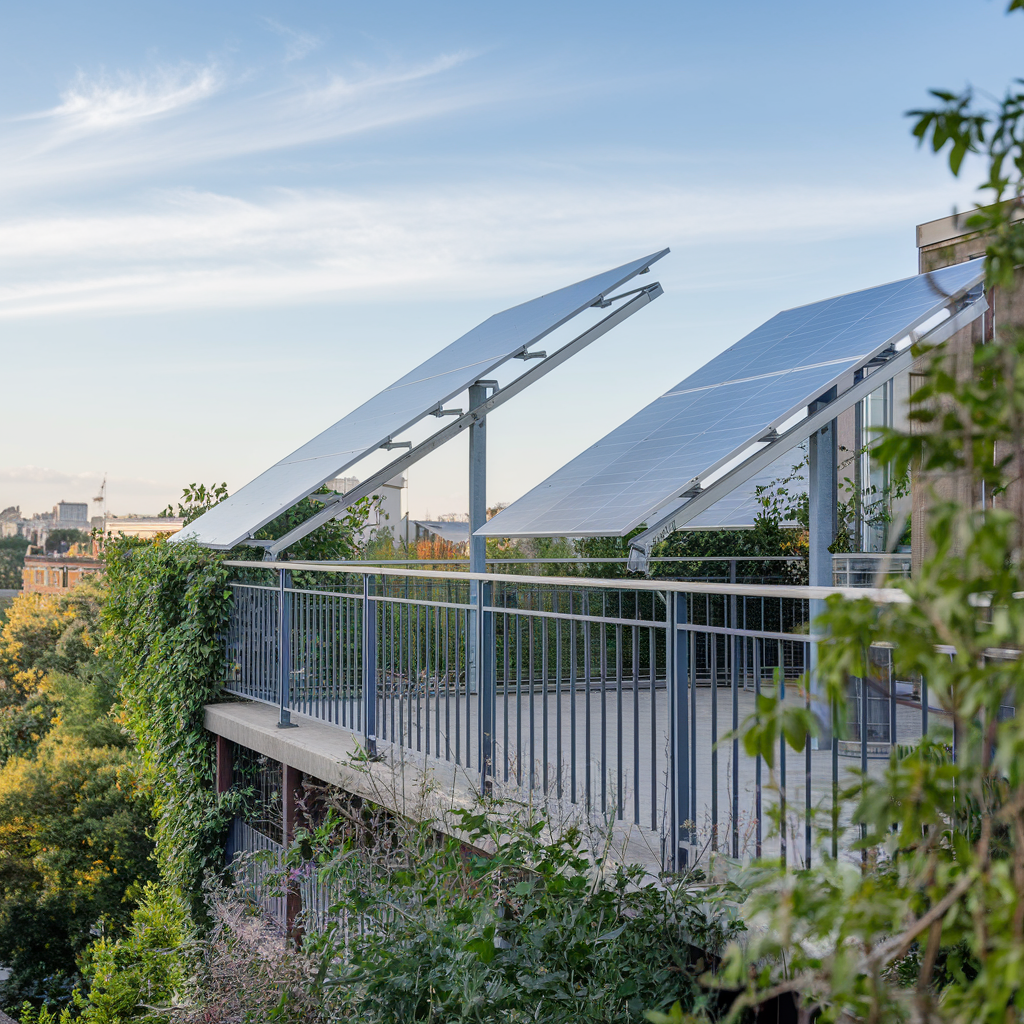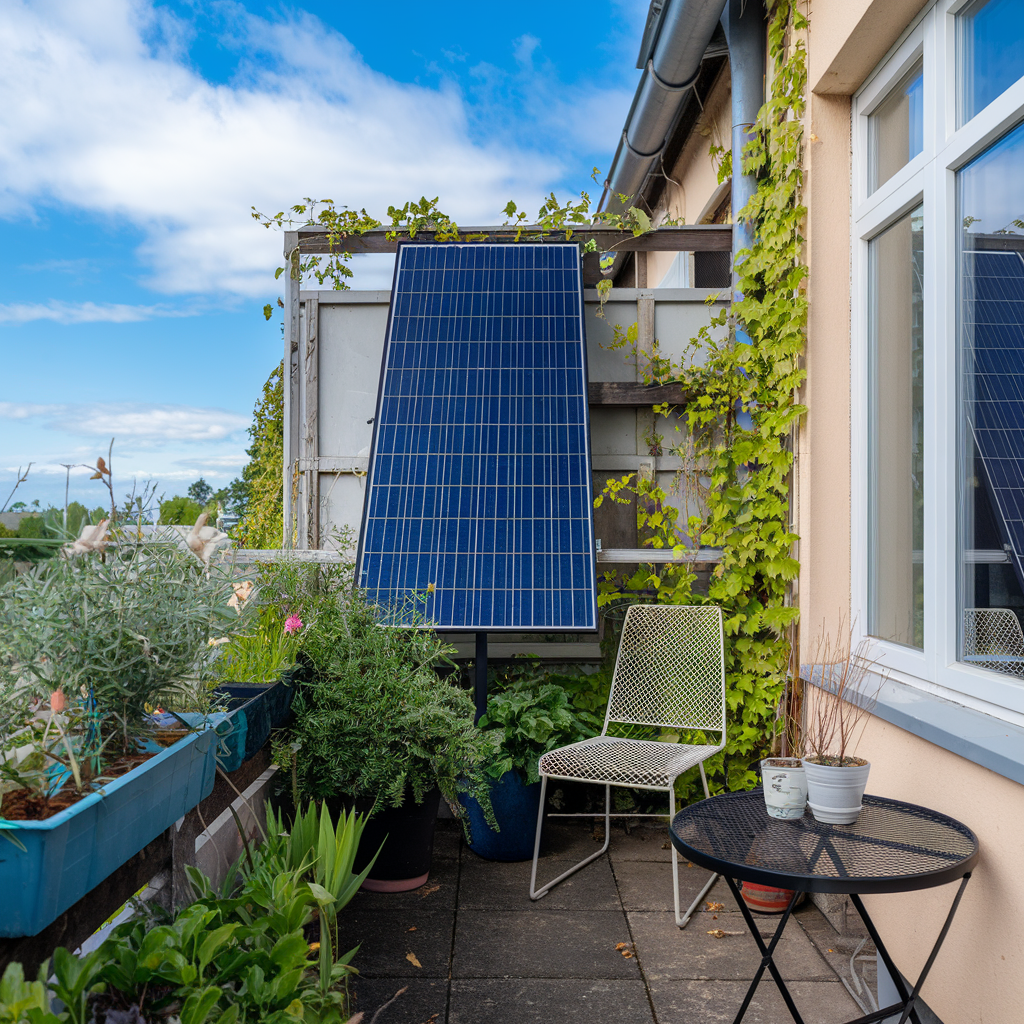With the rapid adoption of electric vehicles (EVs) in Germany, the integration of energy storage systems and EV charging stations has become a hot topic. This development is especially significant as both industries—energy storage and electric mobility—are expanding at an unprecedented rate. As more residents transition to electric vehicles, the demand for efficient, cost-effective, and sustainable charging solutions is rising.
One innovative solution is the combination of Balcony Energy Storage Systems with EV charging stations, enabling homeowners and apartment dwellers to charge their electric vehicles using stored solar energy. These systems allow users to store energy during off-peak hours or when solar energy is available and use it to charge their EVs during peak times, when grid electricity is more expensive.
In this blog, we will explore how Balcony Energy Storage Systems and EV charging stations can be integrated, explain the technical and financial benefits, and provide case studies illustrating the economic advantages of this approach. For businesses and policymakers, this combination offers a new frontier in energy and mobility management.

1. The Rise of Electric Vehicles in Germany
1.1 Germany’s Electric Vehicle Boom
Germany is experiencing a significant shift towards electric mobility, with over 1.3 million electric vehicles on the road as of 2024. This number is projected to rise dramatically as the German government pushes for stricter emissions regulations and offers incentives for EV purchases. However, the rapid adoption of EVs also presents challenges, particularly in terms of charging infrastructure and electricity costs.
1.2 The Growing Demand for EV Charging Solutions
The need for accessible, affordable, and sustainable EV charging solutions is more important than ever. Public charging stations are expanding, but they are often inconveniently located or too expensive, particularly during peak hours. For urban dwellers, especially those living in apartments, the challenge is even greater, as installing private charging stations may require approvals and significant upfront costs.
This is where a Balcony Energy Storage System comes into play. These systems allow users to store energy for later use, providing an excellent solution for EV owners who want to charge their vehicles efficiently without relying entirely on the grid.
2. What Is a Balcony Energy Storage System?
A Balcony Energy Storage System is a compact energy storage unit often installed on balconies or rooftops in urban areas. These systems are typically paired with solar panels that generate energy throughout the day. The energy is then stored in a battery and can be used during peak hours when electricity prices are higher, or when solar energy is not available.
In the context of electric vehicle charging, these systems allow users to store energy during off-peak hours or when solar power is abundant, and use that stored energy to charge their EVs at a later time.
2.1 How Does It Work with EV Charging Stations?
When integrated with an EV charging station, a Balcony Energy Storage System allows for the following:
- Solar Energy Capture: Solar panels generate energy during the day, particularly when you are away at work or when your EV is not in use.
- Energy Storage: The energy is stored in the battery for use later.
- EV Charging: When you return home, you can use the stored energy to charge your EV, avoiding the need to draw expensive electricity from the grid.
- Grid Feedback (Optional): In some setups, excess energy can be sold back to the grid, further reducing costs.
3. The Benefits of Combining Balcony Energy Storage Systems with EV Charging
3.1 Cost Savings: Charging During Peak vs. Off-Peak Hours
In many parts of Germany, electricity prices fluctuate based on the time of day, with higher rates during peak hours (typically in the evening) when demand is highest. A Balcony Energy Storage System allows users to charge their EVs during these peak hours without incurring the high costs associated with grid electricity.
Cost Comparison: Charging an EV with and without Energy Storage
| Scenario | Charging Cost per kWh | Total Cost for 50 kWh EV Charge |
|---|---|---|
| Charging from the grid during peak hours | €0.45/kWh | €22.50 |
| Charging from the grid during off-peak hours | €0.25/kWh | €12.50 |
| Charging using stored solar energy | €0.00/kWh | €0.00 |
In this example, charging an EV using stored energy from a Balcony Energy Storage System results in zero cost, compared to up to €22.50 when relying on grid electricity during peak hours. Over time, these savings can add up significantly, especially for frequent EV users.
3.2 Environmental Impact
In addition to cost savings, using a Balcony Energy Storage System to charge an EV can significantly reduce a household’s carbon footprint. By relying on solar energy, users can avoid consuming electricity generated from fossil fuels, further contributing to Germany’s ambitious climate goals.
- Reduced CO2 Emissions: Charging an EV with solar energy can reduce annual CO2 emissions by up to 2.5 tons per vehicle compared to using grid electricity that may come from non-renewable sources.
- Sustainable Energy Use: Storing solar energy for later use ensures that renewable energy doesn’t go to waste, even if it’s produced when the demand is low.
3.3 Enhancing Energy Independence
For urban dwellers, energy independence is increasingly appealing. By generating and storing their own electricity, residents become less reliant on the grid, which can be especially beneficial during power outages or periods of high grid demand. A Balcony Energy Storage System offers a degree of self-sufficiency, allowing users to manage their energy needs without being subject to fluctuating electricity prices or grid instability.
4. Case Studies: Real-World Applications of Balcony Energy Storage Systems and EV Charging
4.1 Case Study 1: Urban Apartment Dweller in Munich
Markus, a resident of a high-rise apartment building in Munich, recently installed a Balcony Energy Storage System paired with a 3 kW solar panel setup. He also installed an EV charging station to charge his electric vehicle, which he uses for his daily commute.
- Energy Generation: Markus’s solar panels generate an average of 10 kWh per day, enough to fully charge his EV every 5 days.
- Cost Savings: By charging his EV using stored solar energy, Markus saves approximately €60 per month on electricity costs.
- Environmental Impact: Markus has reduced his household’s CO2 emissions by 1.8 tons per year.
4.2 Case Study 2: Multi-Unit Residential Building in Berlin
In Berlin, a multi-unit residential building has adopted a shared Balcony Energy Storage System connected to several EV charging stations. The residents contribute to the cost of the system and share the stored energy to charge their EVs.
- Shared Benefits: By pooling resources, residents were able to install a larger storage system and reduce their individual costs.
- Cost-Effective Charging: Each resident saves between €30-50 per month on EV charging costs.
- Optimized Energy Use: The building collectively reduced its grid dependence by 25%, alleviating pressure on the city’s electrical infrastructure during peak hours.
4.3 Case Study 3: Single-Family Home in Hamburg
Laura, a homeowner in Hamburg, installed a Balcony Energy Storage System along with a solar panel array and an EV charging station. She uses the system to charge both her electric vehicle and power her household appliances.
- Energy Efficiency: Laura’s system generates enough energy to charge her EV and cover 40% of her household’s electricity needs.
- Long-Term Savings: Over the system’s lifetime, Laura expects to save over €10,000 in energy costs.
- Energy Security: During a recent power outage, Laura’s stored energy kept her home powered and her EV charged, providing peace of mind.
5. Financial and Technical Considerations
5.1 Initial Costs and Investment
The upfront cost of installing a Balcony Energy Storage System and an EV charging station can be significant, especially when paired with solar panels. However, the long-term savings in electricity costs can make the investment worthwhile.
Cost Breakdown
| Component | Estimated Cost |
|---|---|
| Balcony Energy Storage System | €3,000 – €5,000 |
| Solar Panels (3 kW system) | €4,500 – €6,000 |
| EV Charging Station | €1,000 – €2,500 |
| Installation | €1,000 – €2,000 |
| Total Investment | €9,500 – €15,500 |
5.2 Return on Investment (ROI)
While the initial costs may seem high, the ROI for a Balcony Energy Storage System and EV charging setup can be quite attractive, especially with government incentives and subsidies.
- Monthly Savings: Users can save between €50-100 per month on electricity and EV charging costs.
- Payback Period: The typical payback period for such a system is between 7-10 years, depending on energy prices and usage patterns.
- Incentives: In Germany, various subsidies and tax incentives are available for both solar installations and EV charging stations, which can reduce the initial investment by up to 30%.
5.3 Technical Requirements
Before installing a Balcony Energy Storage System and EV charging station, it’s important to consider several technical factors:
- Available Space: Ensure there is enough space on the balcony or rooftop for the solar panels and storage system.
- Building Regulations: In multi-unit buildings, you may need approval from the homeowner’s association or local authorities.
- Electrical Capacity: Your home’s electrical system must be able to support the additional load from the EV charging station and storage system.

6. The Future of Balcony Energy Storage and EV Charging
As electric vehicle adoption continues to rise and more cities push for sustainable energy solutions, the combination of Balcony Energy Storage Systems and EV charging stations will become increasingly common. Advancements in battery technology, smart energy management systems, and the integration of decentralized energy solutions will further enhance the efficiency and affordability of these systems.
6.1 Key Trends to Watch
- Battery Advancements: Innovations in battery storage technology will increase the capacity and efficiency of Balcony Energy Storage Systems, making them more affordable and effective for urban households.
- Smart Energy Management: Future systems will integrate more seamlessly with smart grids, allowing for intelligent energy distribution and optimization.
- Policy Support: Governments are expected to continue offering incentives and subsidies to promote the adoption of renewable energy and electric vehicles, further driving the growth of this market.
7. Conclusion: Why Balcony Energy Storage Systems and EV Charging Stations Are the Future
The integration of Balcony Energy Storage Systems with EV charging stations presents a powerful solution for urban residents looking to reduce their energy costs, enhance energy independence, and contribute to a greener future. As Germany continues its transition toward renewable energy and electric mobility, these systems offer a cost-effective, sustainable, and convenient way to meet the growing demand for clean energy and efficient EV charging.
By investing in this combination, homeowners and businesses alike can take control of their energy use, reduce their reliance on the grid, and enjoy long-term financial and environmental benefits. Whether you’re an EV owner, a property developer, or a policymaker, now is the time to explore the potential of Balcony Energy Storage Systems and their role in the future of urban energy and mobility.





